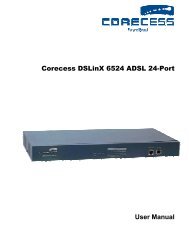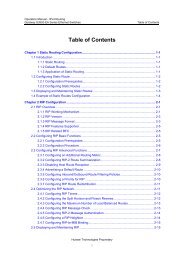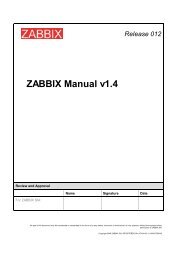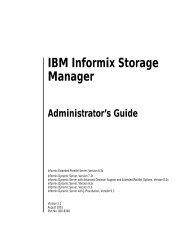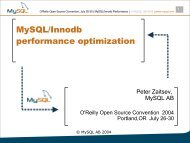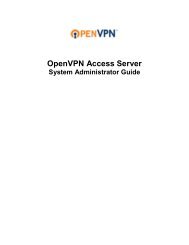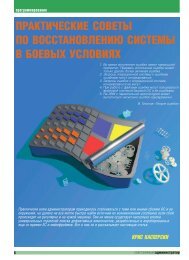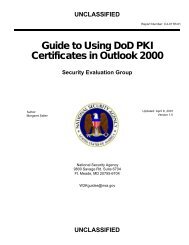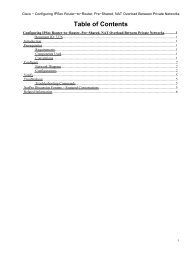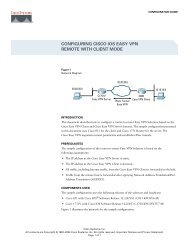Solaris Application Programming, 1/e - Chapter 4 - Parent Directory
Solaris Application Programming, 1/e - Chapter 4 - Parent Directory
Solaris Application Programming, 1/e - Chapter 4 - Parent Directory
Create successful ePaper yourself
Turn your PDF publications into a flip-book with our unique Google optimized e-Paper software.
58 <strong>Chapter</strong> 4 Informational Tools<br />
report a summary of swap space usage under the -s flag. Examples of output from<br />
both of these flags is shown in Example 4.12.<br />
4.3.4 Reporting Process Resource Utilization (prstat)<br />
prstat was a very useful addition to <strong>Solaris</strong> 8. It prints out a list of the processes<br />
that are consuming the most processor time, which can be helpful in identifying<br />
processes that are consuming excessive amounts of CPU resources. It also reports<br />
useful values, such as the amount of memory used.<br />
Example 4.13 shows the first few lines of output from prstat. It reports a<br />
screen of information, each line representing a particular process. By default, the<br />
processes are listed starting with the one that is consuming the most CPU time.<br />
The columns are as follows.<br />
Example 4.12 Output from the swap Command<br />
% swap -l<br />
swapfile dev swaplo blocks free<br />
/dev/dsk/c1t0d0s1 118,33 16 25175408 25175408<br />
% swap -s<br />
total: 2062392k bytes allocated + 1655952k reserved = 3718344k used, 36500448k available<br />
Example 4.13 Sample Output from prstat<br />
PID USERNAME SIZE RSS STATE PRI NICE TIME CPU PROCESS/NLWP<br />
29013 martin 4904K 1944K cpu0 40 0 0:01:15 44% myapplication/1<br />
210 root 4504K 2008K sleep 59 0 0:27:34 0.1% automountd/2<br />
29029 martin 4544K 4256K cpu1 59 0 0:00:00 0.1% prstat/1<br />
261 root 2072K 0K sleep 59 0 0:00:00 0.0% smcboot/1<br />
...<br />
PID: The process ID (PID), which is a unique number assigned to identify a<br />
particular process.<br />
USERNAME: The ID of the user owning the process.<br />
SIZE: The total size of the process. This is a measure of how much virtual<br />
address space has been allocated to the process. It does not measure how<br />
much physical memory the process is currently using.<br />
RSS: The resident set size (RSS) of the process, that is, how much of the process<br />
is actually in memory. The RSS of an application can fluctuate depending<br />
on how much data the application is currently using, and how much of the<br />
application has been swapped out to disk.



